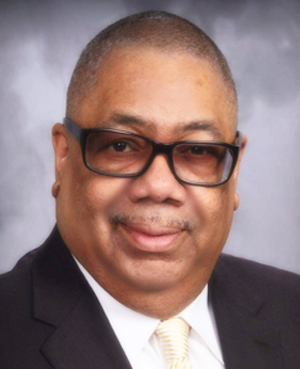
By Rev. Donald L. Perryman, Ph.D.
The Truth Contributor
A [government] that continues to spend more money on military defense than on programs of social uplift is approaching spiritual doom.
– Martin Luther King Jr.
In a strategically orchestrated maneuver during its August 14 meeting, Toledo City Council, under the shadow of police and safety forces’ influence, ultimately rejected a proposal that would have permitted the city to acquire a second Mine Resistant Ambush Protected (MRAP) military-grade armored vehicle from the U.S. Defense Logistics Agency.
City officials pitched the MRAP as a type of disaster ambulance or armored hospital room, a tool for protecting first responders in high-risk situations like active shooter incidents and natural disasters.
On paper, the logic presented by Toledo Police Chief Michael Troendle and Fire and Rescue head Allison Armstrong at Toledo City Council’s Public Safety and Criminal Justice Reform Committee on Monday, August 12, seemed sound.
Yet, the more profound implications of launching such a vehicle into the volatile fabric of Toledo’s community sparked a firestorm of opposition that exposed far more than concerns over public safety.
Community groups, activists, and residents argued that the militarization of police forces undermines the very principles of community policing that are essential to fostering trust and cooperation between law enforcement and the communities they serve.
These community concerns are confirmed by research and rooted in history—a history that has repeatedly shown how military-grade vehicles in civilian settings can escalate tensions rather than defuse them. From Ferguson to Minneapolis, we’ve seen how these tools of war can become symbols of oppression and weaponized, widening the current chasm between the police and the community.
But last week’s controversy didn’t merely end with philosophical disagreements. The process by which the MRAP proposal was handled further fueled the drama.
Councilman John Hobbs III, chair of Toledo City Council’s Public Safety and Justice Committee, pushed the legislation forward. His approach raised eyebrows throughout the Black community.
Accusations of “assembling a kangaroo court,” prioritizing cherry-picked pro-MRAP voices, and sidelining dissenting opinions at Monday’s public hearing sparked outrage. Some community members, feeling silenced and marginalized, were even asked to leave the hearing, which only deepened the mistrust.
Hobbs’ actions—and the potential motives behind them—then became the focal point of the controversy. Many in Toledo’s African American community had expressed their disagreement about receiving the vehicles back in July. They understood that the issue had been satisfactorily dealt with, meaning it had been placed in committee and was not coming out. These people were agitated, having discovered the committee held the public hearing, and even distraught when, two days later, the issue made its way for a vote from the full council.
Rumors then swirled that Hobbs’ eagerness to advance the MRAP proposal was less about public safety and more about securing political capital. As someone rumored to harbor mayoral aspirations, Hobbs’ alignment with police and fire unions was seen by some as either being “pressured” by Toledo Police Chief Michael Troendle or a calculated move to win union support in future elections. Yet, this strategy appears to have backfired, alienating significant portions of the community who view the MRAP as unnecessary and emblematic of the larger problem of over-policing.
The vote on the MRAP, which ultimately ended in rejection, thus exposed the stark divisions within the council and the African American community.
To the dismay of many in the community, African American councilmembers Hobbs and Vanice Williams supported Chief Troendle and Fire Chief Allison Armstrong, who argued passionately that the vehicle would be an invaluable asset in protecting lives during crises.
Yet, their voices were drowned out by a majority of council members who sided with the community’s concerns over militarization and the long-term costs of maintaining such equipment.
Councilman Nick Komives led a group that defeated the proposal to procure the MRAP. Those voting with Komives included councilmen Carrie Hartman, Mac Driscoll, Theresa Gadus, and Sam Melden, who joined African Americans, Brittany Jones and Cerssandra McPherson.
Clearly, this majority sees Toledo as a city that invests in community-based solutions to crime and safety instead of one that prioritizes militarization.
Ultimately, the rejection of the MRAP is more than just a decision about a piece of equipment. It reflects a larger struggle within Toledo—a struggle over the direction of public safety, the role of law enforcement, and the trust between the police and the communities they serve. It’s a reminder that decisions made in council chambers have real consequences on the streets (and at the ballot box) and that the path to authentic safety and security isn’t aligned with police rolling down the streets of Toledo neighborhoods in armored vehicles.
Yet, this debate is far from over. The controversy has indeed left its mark on Toledo, and the fallout will likely influence the city’s politics for years.
In the end, though, the real question isn’t whether Toledo needs an MRAP—it’s whether Toledo can afford the cost of what the MRAP represents.
Contact Rev. Donald Perryman, PhD, at drdlperryman@centerofhopebaptist.org
